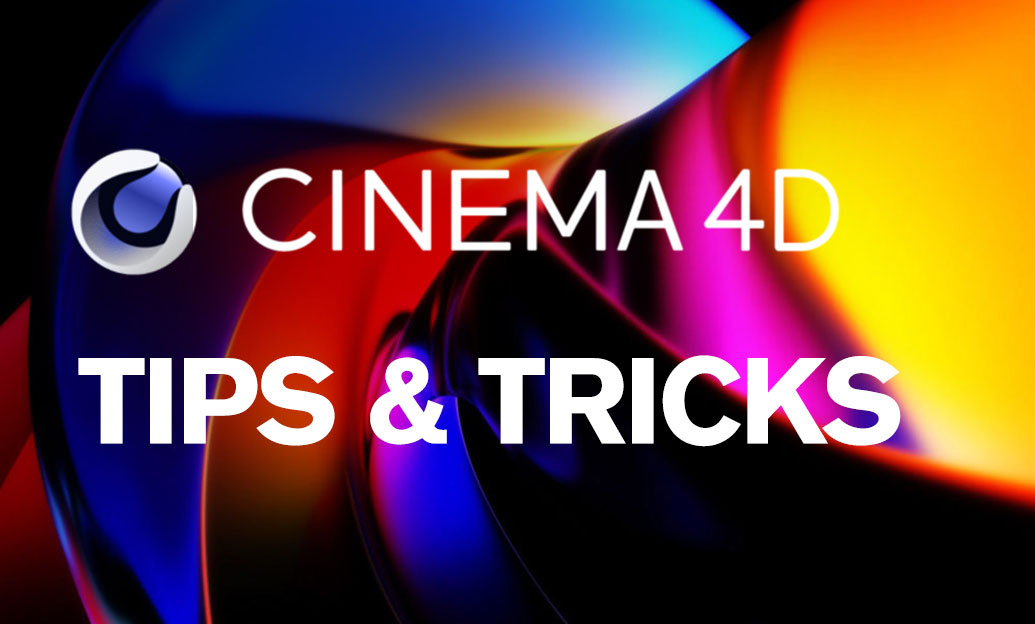Your Cart is Empty
Customer Testimonials
-
"Great customer service. The folks at Novedge were super helpful in navigating a somewhat complicated order including software upgrades and serial numbers in various stages of inactivity. They were friendly and helpful throughout the process.."
Ruben Ruckmark
"Quick & very helpful. We have been using Novedge for years and are very happy with their quick service when we need to make a purchase and excellent support resolving any issues."
Will Woodson
"Scott is the best. He reminds me about subscriptions dates, guides me in the correct direction for updates. He always responds promptly to me. He is literally the reason I continue to work with Novedge and will do so in the future."
Edward Mchugh
"Calvin Lok is “the man”. After my purchase of Sketchup 2021, he called me and provided step-by-step instructions to ease me through difficulties I was having with the setup of my new software."
Mike Borzage
Five Transformative ZBrush Features Revolutionizing Modern Design Workflows
August 05, 2025 5 min read


Once considered “digital clay” for character artists, ZBrush has evolved into a multidisciplinary engine whose feature releases routinely influence everything from consumer-electronics prototyping to large-scale façade studies. The following analysis revisits five transformative updates that every product, entertainment, and architectural designer should internalize.
ZRemesher — Next-Gen Auto-Retopology
When ZRemesher debuted it turned a labor-intensive craft into a largely automated background task, but the modern iteration pushes even deeper. Adaptive Guides let modelers sketch directional flow directly onto a high-density surface; the algorithm then resolves those strokes into edge loops that mirror the intended curvature. Equally valuable are the Keep Groups and Detect Hard Edges switches, which safeguard panel splits or knife-sharp creases that later define parting lines, mold shut-offs, or mechanical hinging.
Before this tool matured, designers manually rebuilt topology in external packages, nudging vertices for hours just so subdivision or displacement maps behaved. A single athletic-shoe midsole might consume an afternoon. ZRemesher compresses that exercise into minutes, providing a mesh that exports cleanly to SOLIDWORKS for filleting, to Unreal Engine for real-time shading, or to Siemens NX for NURBS conversion.
- Consumer product teams iterate ergonomic handles without worrying about wrecked UVs after each form change.
- Character artists enjoy predictable edge rings around eyelids and lips, ensuring blend-shape stability.
Iterations that once stalled because “retopo isn’t finished yet” now move forward the same day, accelerating approvals and shortening the overall design sprint. The downstream pipeline profits as well: displacement baking, normal mapping, and even FEM meshing inherit a rational vertex layout created almost automatically.
Sculptris Pro — Brush-Based Dynamic Tessellation
Traditional ZBrush workflow required users to plan subdivision levels in advance. Going back to add a fin or engrave micro-type often meant either accepting a stretched polygon or rebuilding the hierarchy. Sculptris Pro discards that rigidity. Each brush stroke automatically re-tessellates triangles beneath the cursor—densifying where detail is needed, decimating where it is not. The sculpt remains memory-efficient, yet it feels as if polygon limits have vanished.
This has concrete implications during early ideation. Footwear designers can dig aggressive traction lugs into a sole then immediately smooth broad foam volumes, all on the same dynamized surface. Jewelers sketch filigree swirls without first blocking out stone seats. Architects chasing neo-gothic tracery quickly gouge arches or emboss floral bosses without pondering “can this shrine support another subdivision level?”
Equally important is workflow interoperability. Because Sculptris Pro retains native ZBrush topology rather than voxelizing it, files export without the weight and fragility that voxels often introduce. A sketch shipped to a Finite-Element analyst or to a photogrammetry team remains tractable. The frequency with which early-stage CAD mock-ups hit a creative wall—“topology is too dense, re-do later”—drops dramatically.
Live Boolean System — Non-Destructive Subtractive Modeling
Many additive manufacturability features—vents, undercuts, living hinges—boil down to Boolean subtraction or union. Historically those operations in ZBrush were destructive, forcing artists to duplicate files “just in case.” The Live Boolean system changes that psychology. Users stack as many positive, negative, or intersected subtools as necessary while viewing a live composite in the viewport. Once the design team signs off, Make Boolean Mesh converts the preview into watertight geometry.
For industrial designers it means slots for USB-C ports, speaker perforations, or over-mold cavities can be dialed in even during client calls. No export to Rhino, no waiting for remote CAD seats. Architects enjoy the same freedom on larger scales—parametric perforation patterns across a rainscreen can be punched, rearranged, and density-analyzed on the fly.
- Iteration loops shrink because each cut, fillet, or blend is non-destructive and instantly reversible.
- Design reviews become more engaging: stakeholders watch louvers open or close in real time, grasping airflow or light-transmission consequences immediately.
The collateral benefit is psychological. When every change is reversible, exploration spikes. Teams venture into riskier aesthetic territory, knowing they can always roll back to yesterday’s stack without a version-control nightmare.
NanoMesh & ArrayMesh — Procedural Instancing Paradigm
Populating repeated features has long been the bane of polygon modeling. Whether you are riveting aircraft skins or deploying a city’s worth of balcony units, scene weight mushrooms. ZBrush solves this with two complementary systems. NanoMesh embeds instanced geometry directly on a host surface; each instance inherits local normals yet stores only a lightweight reference. ArrayMesh extends the idea into linear, radial, and polar arrays that can themselves stack hierarchically.
What elevates these tools is the robust randomization layer. Scale jitter, rotation offsets, UV flipping, even color variation can be applied per instance. A single greeble subtool transforms into a kilometer of star-destroyer hull plating, and the viewport barely notices.
Three representative scenarios illustrate the leverage:
- Motorcycle OEMs sprinkle thousands of M4 socket-head bolts across a fairing; altering thread pitch or head profile updates every bolt instantly.
- Parametric façades replicate diagrid nodes or terracotta baguettes across high-rise elevations, yet each unit can receive unique albedo or micro-deviation for realism.
- Creature designers feather a gryphon in minutes, maintaining editability—change the base feather once and the entire mantle refreshes.
The memory savings alone justify adoption, but the real win is cognitive. Designers think in terms of pattern logic rather than brute duplication, which dovetails with generative approaches and downstream scripting in Houdini or Grasshopper.
Dynamics & Cloth Simulation — Physics Inside the Sculpt
Prior to this release, drapery or inflatable morphology typically required export to Marvelous Designer, Blender, or specialized FEA tools. The round-tripping not only consumed hours but eroded surface fidelity. Now ZBrush hosts its own cloth solver complete with gravity, wind, and collision parameters. A sculpted mannequin can don a jacket in real time, the folds updating interactively as you move sleeves or tug lapels.
At a smaller scale, MicroPoly mode swaps each polygon with a weave preset, instantly generating realistic twill or knitted meshes suitable for macro-photorealism render passes. Architects harness the same engine to test tensile membranes, inflatable pavilions, or ETFE cushions, scoring preliminary form-finding data without launching an external CFD environment.
Perhaps the most underrated advantage is communication. A soft-goods team can now present not merely a static sculpt but an animated drape settling over a last or a seat frame, highlighting pull points and slack zones. The simulation may not replace high-resolution FEA, yet it delivers 80 % of the insight at 10 % of the time cost, all within the same file that houses decorative embossing and parting-line sculpt data.
Conclusion
Taken together, these five features elevate ZBrush far beyond its origins. ZRemesher speeds geometry preparation; Sculptris Pro detaches creativity from polygon budgets; the Live Boolean system invites fearless cut-and-fill exploration; NanoMesh and ArrayMesh deliver industrial-scale repetition without bloat; and Dynamics with MicroPoly folds physics into clay. Each one reprises a task that once splintered across multiple applications, consolidating it under a single, sculpt-centric umbrella.
Map these gains onto any pipeline and a pattern emerges: fewer dead hours waiting for retopo, cleaner asset handoff to engineering, and richer visualizations early enough to sway stakeholder sentiment. Evaluate your current toolchain—identify even one area where a legacy step can be replaced by these capabilities—and the ROI will surface swiftly, either as shaved lead time or as the freedom to chase a bolder form language. In an industry where speed and differentiation run neck and neck, that advantage is hard to overstate.
Also in Design News

Enhancing Design Workflow Efficiency with Personal AI Assistants
September 04, 2025 10 min read
Read More
Cinema 4D Tip: Enhancing Workflow Efficiency with Custom Menus and Layouts in Cinema 4D
September 04, 2025 3 min read
Read More
Bluebeam Tip: Enhancing PDF Security with Bluebeam Revu: Protecting Sensitive Data and Ensuring Confidentiality
September 04, 2025 2 min read
Read MoreSubscribe
Sign up to get the latest on sales, new releases and more …


